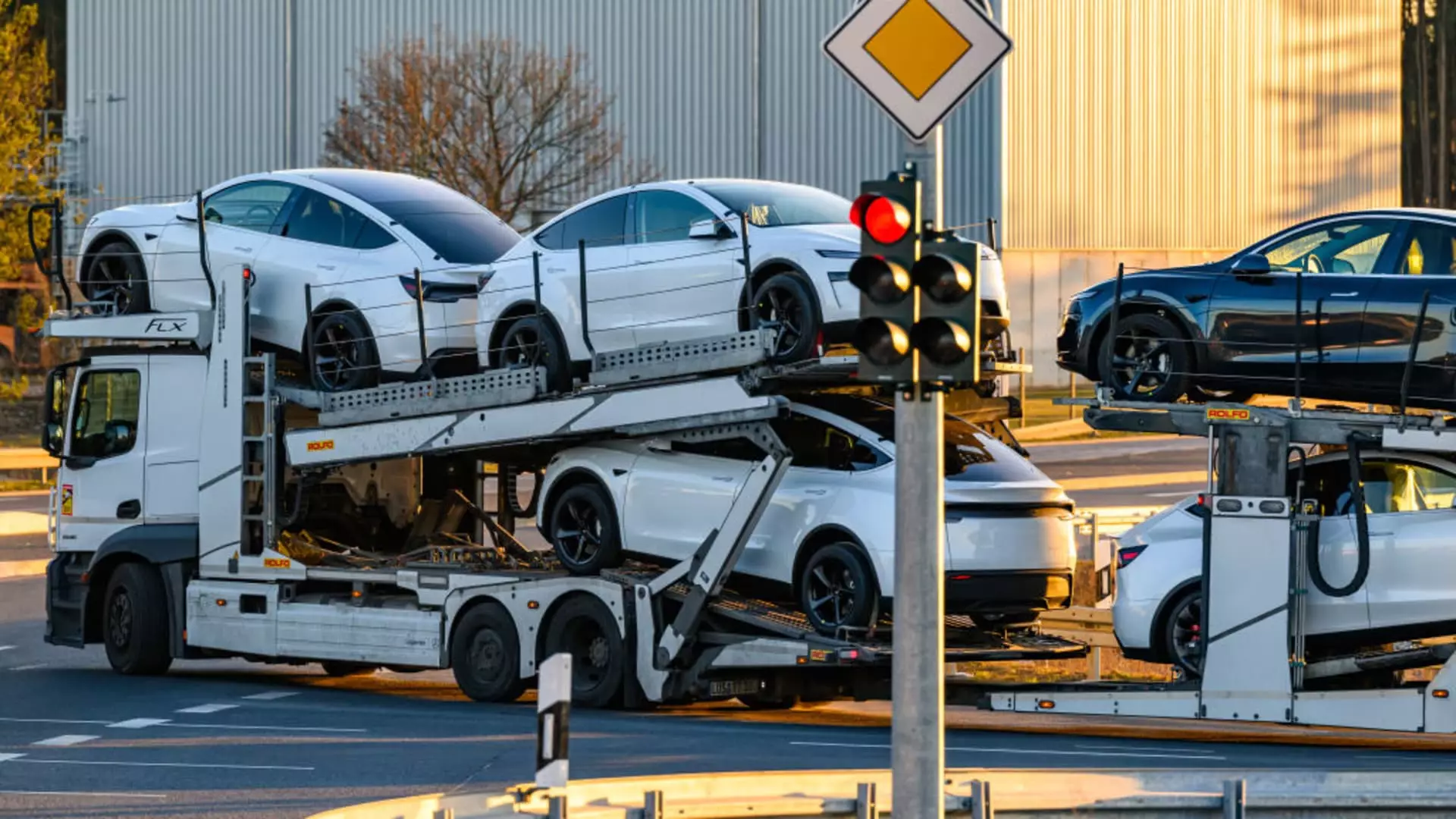Tesla, a name synonymous with electric vehicles, is currently facing a storm of adversity. Recent reports indicate that the company delivered a mere 336,681 vehicles in the first quarter of 2025, representing a staggering 13% drop compared to the same timeframe last year. For investors, these figures are not merely disappointing; they expose the chinks in Tesla’s once ironclad armor. The automotive market is notoriously fickle, and a decline like this raises eyebrows. Many would argue that this sharp downturn serves as a wake-up call, prompting stakeholders to reevaluate their confidence in the electric vehicle giant.
Beyond the shocking figures, the context surrounding this decline deserves scrutiny. Analysts had projected delivery numbers hovering around 360,000 to 370,000 vehicles, with a consensus estimate pushing expectations even higher at approximately 377,590. The reality, therefore, is not just a simple miss; it is a glaring indication that Tesla’s trajectory may not be as upward as many had predicted. One could argue that this signifies not just a production issue, but a problem of perception: how much faith can investors retain in Tesla’s future when reality routinely fails to meet even conservative expectations?
The Political Quagmire
Moreover, the company’s issues are compounded by outside influences, chiefly encapsulated by CEO Elon Musk’s controversial political ventures. After entering the political fray, Musk’s actions have prompted boycotts and protests that signify a growing disconnect between Tesla and segments of its customer base. When a company faces public backlash as Tesla does, it sends ripples through sales figures. The correlation between political engagement and marketplace performance is not merely speculative; it is a harsh reality that companies must navigate delicately.
Musk’s role in the Department of Government Efficiency has been less about steering the company toward a brighter future and more about creating a political narrative that diverges sharply from the innovative, customer-focused ethos that Tesla built its reputation on. Perceptions hold significant weight in the market; Musk’s political affiliations, especially in relation to a former administration known for its divisive policies, have begun to cast a shadow on Tesla’s brand image.
A Competitive Landscape
Additionally, Tesla faces increasing competition from a flood of new electric vehicle manufacturers eager to claim a piece of the market. The rise of companies like BYD poses a substantial threat, especially as domestic and international markets grow saturated. Tesla’s dominance, especially in the crucial European market, is already waning, with their market share seeing a decline from 17.9% to a mere 9.3% in the first quarter alone. Particularly revealing is the drastic drop in Germany, where Tesla’s share in the battery electric vehicle sector nosedived from 16% to just 4%.
For Tesla to galvanize its falling status, it must adapt to this newfound competition. Expectations around its best-selling Model Y should be tempered; simply wishing for favorable outcomes amid fierce competition and rising production costs is not enough to regain investor confidence.
Stock Market Turmoil
Tesla’s stock performance has mirrored its operational challenges, sinking by 36% in the first quarter—a stark reminder to investors of the inherent volatility associated with tech stocks, particularly in niche markets like electric vehicles. With over $460 billion erased from market capitalization, the stakes have never been higher. For seasoned investors, this decline should signal a crucial contemplation about their investment strategies. Are they prepared to hold their ground or pivot away from a sinking ship, especially as Tesla continues to falter in the face of growing external pressures?
The recent surge in Tesla’s stock by nearly 4% following the news about Musk’s potential resignation from his government role might provide a temporary reprieve but serves as a hollow reassurance against the broader concerns about the company’s viability. Investors must come to terms with the uncomfortable reality: that the once-mighty Tesla may not automatically rebound as it has in the past.
Reputational Damage
Perhaps one of the most disheartening aspects of Tesla’s current predicament is its reputational damage, which is becoming increasingly pronounced. The company’s strained relations with customers—evident from organized protests and boycotts—indicate a profound shift in public sentiment. It stands as a stark warning for innovators in the automobile industry: political affiliations can significantly influence customer trust and brand loyalty.
While investors are no doubt pondering their next steps, it is essential to recognize that nearly every metric surrounding Tesla at this moment seems grim. Stakeholders are left to question not only Tesla’s immediate performance but also its long-term viability in an increasingly volatile and crowded electric vehicle marketplace. The past held promises; the future now seems precarious.

